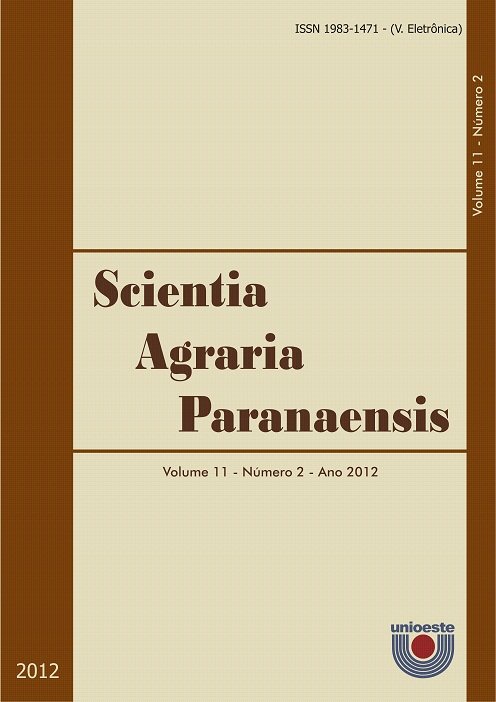CULTURE MEDIUM AND GROWTH REGULATORS IN THE MICROPROPAGATION OF GRAPEVINE ROOTSTOCKS
DOI:
https://doi.org/10.18188/sap.v11i2.5491Keywords:
Vitis sp., cultura de tecidos, BAP, cinetina.Abstract
The micropropagation of grapevine is used, mainly, for the obtaining uniforms plants, virus-free and in a short space of time. With the objective to improve techniques of grapevine rootstocks micropropagation (Vitis sp.), nodal segments with 2,5 cm length and 2 axillary’s buds, deriving by plants in vitro had been excised and inoculated in different culture medium, supplemented with four concentrations of cinetina and four of 6-benzilaminopurin (BAP), in all possible combinations. The pH was adjusted for 6,4 (DSD1) and 5,8 (MS), before the addition 6 g cm-3 of agar and the sterilization by 121 °C and 1 atm per 20 min. After the inoculation, the explants had been transferred to growth room the 25 ± 2 °C, irradiance of 35 mol m-2 s-1 and fotoperíodo of 16 h, where had remained in these conditions per 70 days. The used experimental delineation was casualizated, using 4 repetitions and 3 tubes contends onde explant each. Bigger buds’s number of ‘Kobber 5BB' was verified in culture medium Kc. For the rootstock ‘VR043-43' the culture medium more adjusted in the multiplication in vitro was DSD1. Better resulted in the ‘R110’ micropropagation and little formation of callus had been observed in the absence of growth regulators in the culture medium.
Downloads
Published
How to Cite
Issue
Section
License
Aviso de Direito Autoral Creative Commons
Política para Periódicos de Acesso Livre
Autores que publicam nesta revista concordam com os seguintes termos:
1. Autores mantém os direitos autorais e concedem à revista o direito de primeira publicação, com o trabalho simultaneamente licenciado sob a Licença Creative Commons Attribution que permite o compartilhamento do trabalho com reconhecimento da autoria e publicação inicial nesta revista.2. Autores têm autorização para assumir contratos adicionais separadamente, para distribuição não-exclusiva da versão do trabalho publicada nesta revista (ex.: publicar em repositório institucional ou como capítulo de livro), com reconhecimento de autoria e publicação inicial nesta revista.
3. Autores têm permissão e são estimulados a publicar e distribuir seu trabalho online (ex.: em repositórios institucionais ou na sua página pessoal) a qualquer ponto antes ou durante o processo editorial, já que isso pode gerar alterações produtivas, bem como aumentar o impacto e a citação do trabalho publicado (Veja O Efeito do Acesso Livre).
Licença Creative Commons
Esta obra está licenciada com uma Licença Creative Commons Atribuição-NãoComercial-CompartilhaIgual 4.0 Internacional, o que permite compartilhar, copiar, distribuir, exibir, reproduzir, a totalidade ou partes desde que não tenha objetivo comercial e sejam citados os autores e a fonte.


